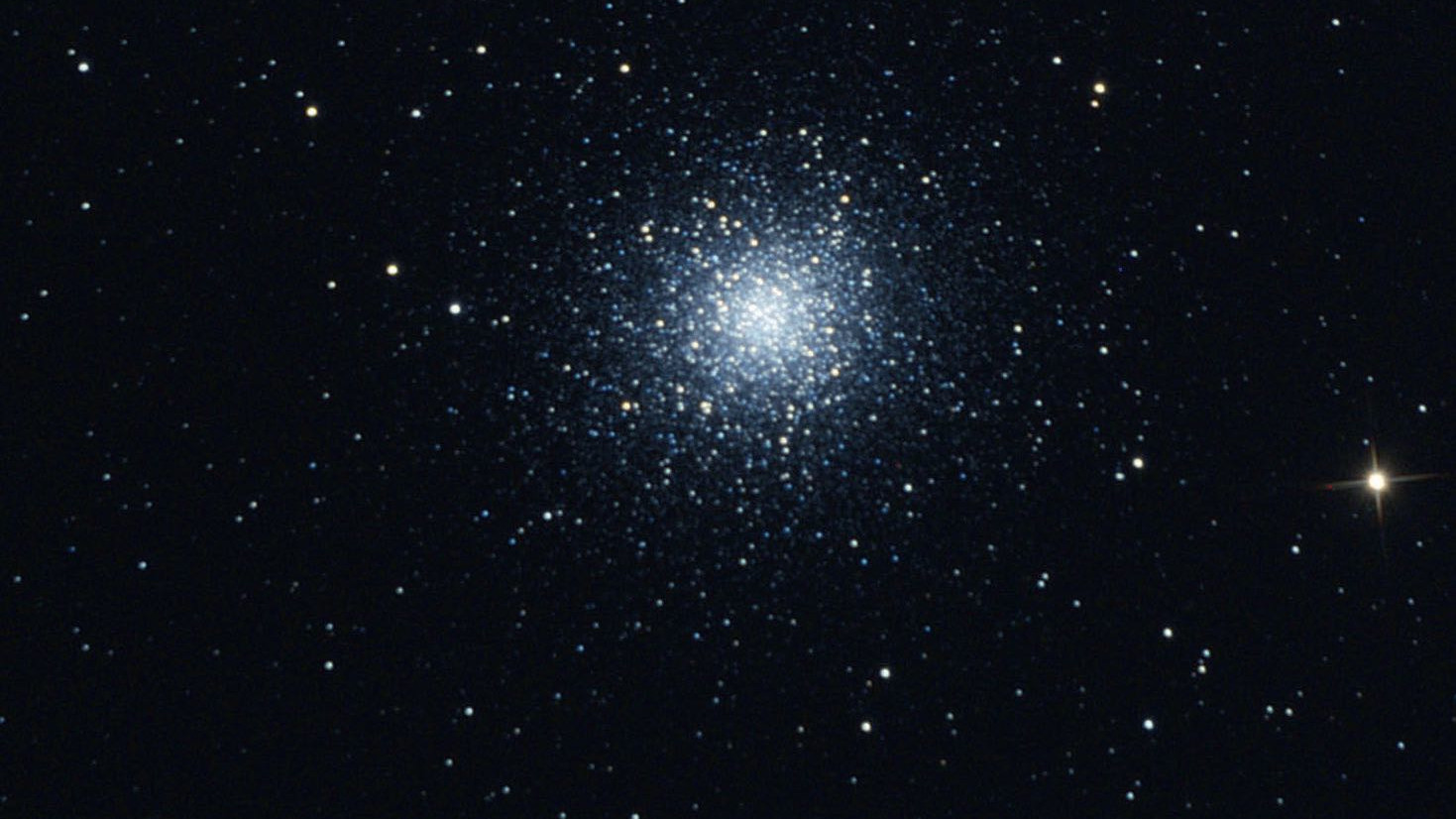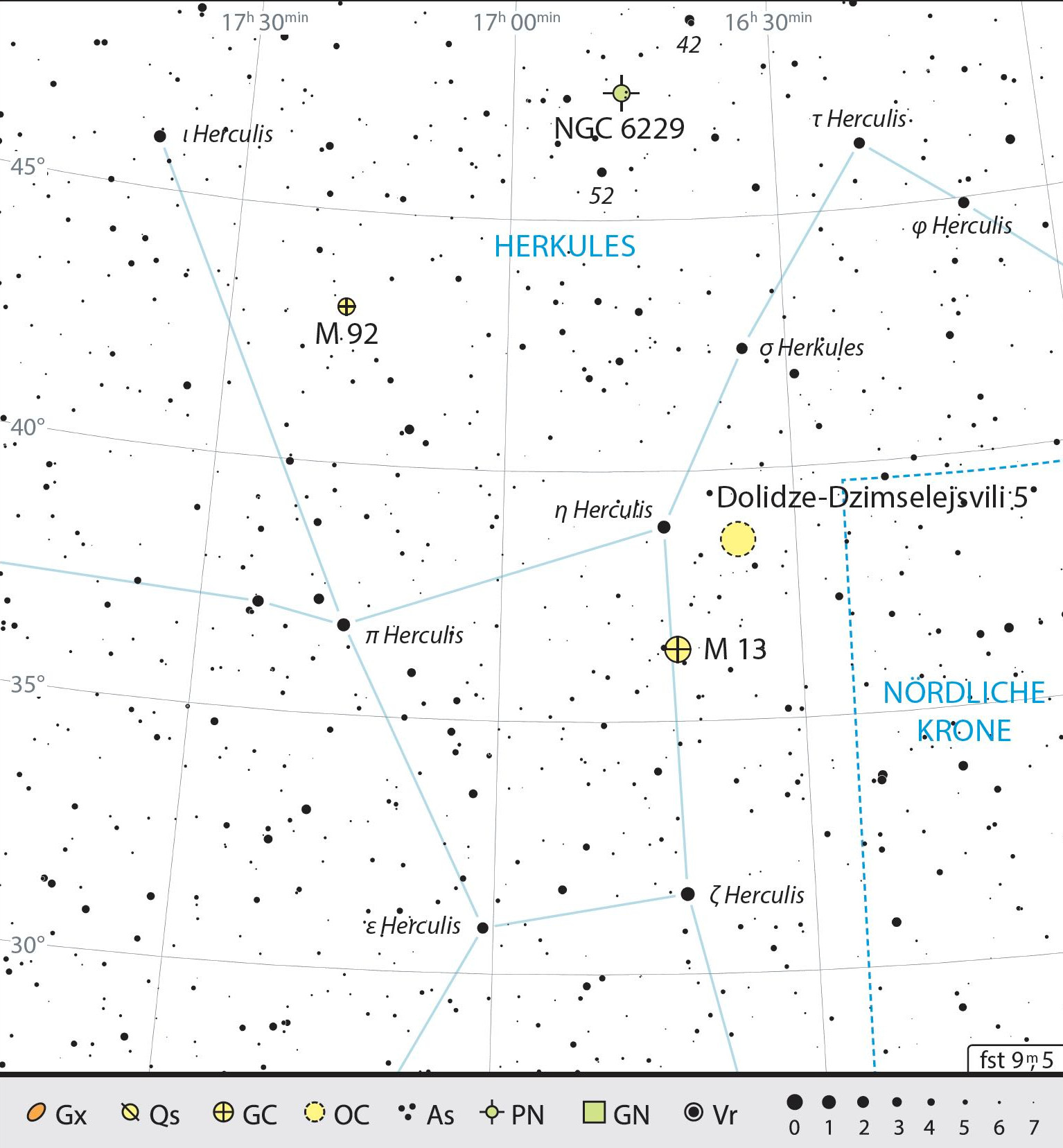The faint giant
On a globular cluster safari in Hercules: besides the show-piece M13, you can also observe the impressive M92 and NGC 6229.
 You cannot resolve M13 with binoculars, but you can still identify it as a globular cluster. Marcus Degenkolbe
You cannot resolve M13 with binoculars, but you can still identify it as a globular cluster. Marcus DegenkolbeAlthough the mythological figure Hercules was known for his strength, his heavenly counterpart is rather more inconspicuous. Despite the large area that this constellation occupies, it is only its trapezoidal centre that catches the eye. Fortunately, some of the stops of our tour are gathered close-by.
Unequal siblings
Probably the most famous globular cluster in the northern sky, Messier 13 is even visible with the naked eye, and is easy to locate between the trapezium’s western stars. Through binoculars, it reveals itself as a clearly sizeable sphere. Unfortunately, the magnification is not enough to resolve individual stars, but even at 10 times magnification it looks slightly frizzy at the edges.
Messier 92 is literally outshone by M13. This globular cluster is also visible to the naked eye, but only if the visibility is excellent. You’ll need to make some effort to find it between stars π and τ Herculi because, although it is very bright, at 8 times magnification it’s almost point-shaped. You will only be able to see how extensive it is with 10 times magnification, though it is much smaller than M13.
 You have to cover great distances to visit the objects of this tour. J. Scholten
You have to cover great distances to visit the objects of this tour. J. ScholtenLittle brother and a tongue-twister
In addition to the two Messier objects, there is a third globular cluster in Hercules which can be observed with larger binoculars such as 10×50, albeit a very difficult one: NGC 6229. High up in the north of the constellation between stars 42 and 52 Herculi there is a small faint star, which appears slightly fringed when observed more closely. A pair of brighter stars slightly to the west will help you to locate it.
There are objects that are not exactly spectacular to view, but are nonetheless really something special. On the basis of its name alone, open cluster Dolidze-Dzimselejsvili 5 is such an object. The catalogue complied by the two Georgian astronomers includes a total of eleven star clusters, all of which are already in the process of dissolving and therefore not really particularly attractive targets. This is also the case with DoDz5, which can be found in the middle of the line between η and 25 Herculi; you’ll find that M13 should remain in your binocular field of view. If you use averted vision, you can see a conglomerate of small faint stars within a radius of around 20', from which 1 or 2 stars shine more brightly. Not an easy target, but an exotic one – and suitable for those of us with binoculars.
Author: Kay Hempel / Licence: Oculum-Verlag GmbH
